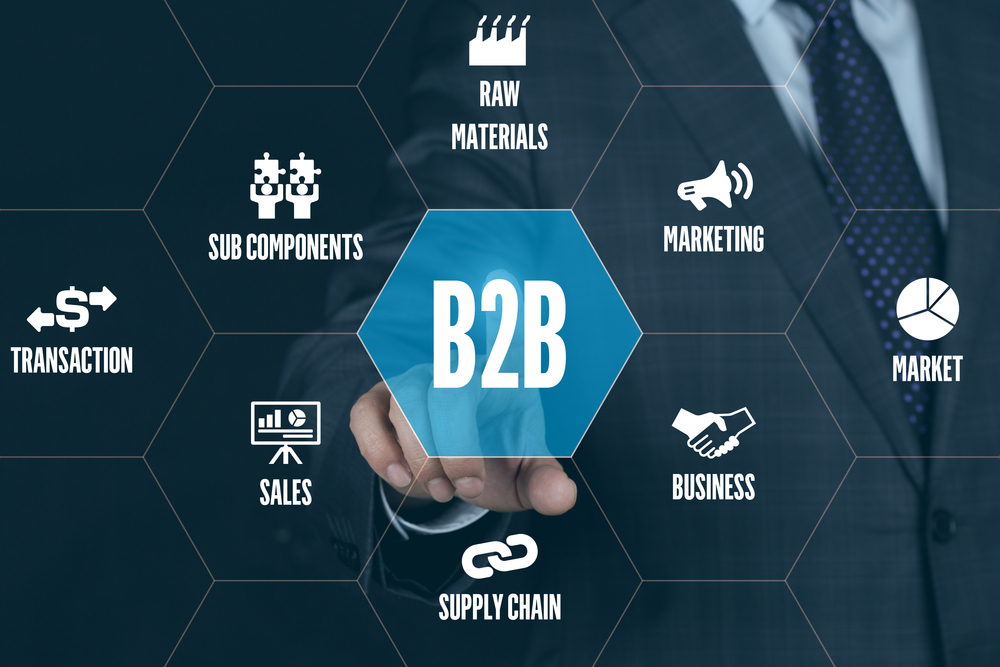Business Model B2B
There are many business models, but today I’ll discuss the B2B models. These are models where companies allow other businesses to use their products for a fee.
What is a B2B Business Model?
A B2B Business Model is a business that sells, rents, or leases its product to another business. They are also called “Business-to-Business” models. They are used by companies to increase revenue, gain market share, and enhance their brand.
Types of B2B Business Models:
Customer-Centric Model
A customer-centric B2B model is a Business-to-Business model where one business sells its product and provides service and support to the other companies that use it. This B2B business model ensures long-term success by separating itself from the competition and gaining brand loyalty.
Examples of this would be Dropbox – which charges $10 per month for 100 GBs of storage; Microsoft Office; Adobe; etc. Suppose you’re not familiar with these companies.
In that case, I’ll explain further: Dropbox gives an additional 2 GBs to any referral you send them (those that sign up using your link) and additional referral bonuses if they continue to use their service. This creates brand loyalty because the more people you refer and the longer they use Dropbox, the more you get in return. So it’s a win-win situation: if you love Dropbox and want to continue using it, then you’re going to keep referring people to them, but if you don’t like the company for whatever reason (i.e., there are better alternatives), then at least you can earn some money from referring others off of your original investment.
Microsoft Office is an example of a customer-centric B2B model because other companies widely use it in business. Businesses rely on Microsoft’s products working correctly when they need it most – when deadlines are pressing and stress levels are high – and Microsoft provides support and service for their most important clients, businesses that pay them.
Adobe uses a customer-centric model where they charge for their product and offer additional services such as hosting and maintenance.
Buyer Centric Model
A buyer-centric B2B model is a Business-to-Business model where one business sells its product to another but does not offer service and support. This B2B business model ensures short-term success because it keeps initial costs low by providing a product that does not require ongoing support. However, they may have an issue in the long run if no customer loyalty or brand value is created from this company/product.
Examples of this would be Home Depot – which charges for their products and offers no additional services; Craigslist; OfficeMax, etc.
Intermediary Centric Model
An intermediary-centric B2B model is a Business-to-Business model where one business charges the other for their product and charges an additional fee to act as the middleman between them. This type of B2B business model ensures long-term success because it provides revenue to keep running; it will not be profitable initially (due to high cost), but it can create brand value by offering beneficial or unique services over time.
Examples of this would be Zipcar – they charge $10 per hour plus membership fees, Microsoft Office 365, etc.
Zipcar is an example of an intermediary-centric B2B model because they allow people to rent cars directly from other users, saving customers time and money.
B2B Models that Can Help in Connecting with Your Trading Partners:
The direct connection B2B model
It is a business-to-business model that helps businesses connect with their trading partners. This B2B relationship allows companies to find the best providers for their individual needs, ensuring long-term success because it can save time finding new suppliers or expanding into foreign markets.
Examples of this would be Upwork – an online job search website where you can post your jobs and hire employees from around the world; TradeKey – which connects buyers directly with manufacturers in Asia; Alibaba – which connects traders/businesses worldwide.
Upwork is an example of a direct connection B2B model. They receive a 7% cut of each transaction while connecting employers with freelancers, ensuring long-term success by providing more opportunities to make money while meeting individual needs.
TradeKey is an example of a direct connection B2B model. They connect buyers directly with manufacturers, ensuring long-term success by providing more opportunities to make money while meeting individual needs.
Alibaba is an example of a direct connection B2B model for both the buyer and seller because they provide a platform to connect businesses from all around the world – it ensures long-term success for their business because there will always be people looking to buy or sell their platform.
Network B2B model
The network B2B model is a business-to-business model that connects new partners to others with the exact needs. This type of B2B relationship focuses on meeting individual needs, ensuring long-term success because it allows users to find the best providers for their specific requirements.
Examples of this would be LinkedIn – whose primary customers are businesses, Facebook Ads, etc.
LinkedIn is an example of a network B2B model. They connect people looking for jobs with employers, ensuring long-term success by providing more opportunities/connections to make money or hire employees.
Facebook Ads is an example of a network B2B model because they connect businesses directly with customers, ensuring long-term success by providing more opportunities/connections to make money.
Hybrid B2B model
A hybrid B2B model is a business-to-business model with elements of direct connection and network. This relationship focuses on meeting individual needs, ensuring long-term success by allowing users to find the best providers for their specific requirements.
Examples of this would be Upwork – which offers services similar to LinkedIn and Facebook Ads; Elance – another website where employers can post jobs and hire employees from around the world; etc.
Upwork is an example of a hybrid B2B model. They receive a 7% cut of each transaction while connecting traders/businesses with freelancers, ensuring long-term success by providing more opportunities to make money while meeting individual needs.
Elance is an example of a hybrid B2B model because they connect traders/businesses with employees, ensuring long-term success by providing more opportunities to make money while meeting individual needs.
Managed B2B model
The managed B2B model is a business-to-business model that provides ongoing business support. This relationship focuses on meeting individual customer needs, ensuring long-term success by allowing users to find the best providers for their specific requirements.
Examples of this would be Amazon Web Services – whose primary customers are large enterprises/companies, Google Apps; etc.
Amazon Web Services is an example of a managed B2B model. They provide ongoing support and services to large enterprises/companies, ensuring long-term success by providing more opportunities/connections to make money or hire employees.
Google apps are an example of a managed B2B model because they offer various software to businesses, focusing on ongoing support.
Advantages of Choosing The Correct B2B Business Model
Longer-term Relationship
The B2B business model – when it is implemented correctly, offers the opportunity to form longer-term relationships with customers.
This provides stability and predictability in the marketplace. This strategy also reduces marketing costs (fewer campaigns required).
Scalability/Availability of Products or Services
Many businesses are looking for scalability in their services. However, no matter how successful they become, there always seems to be a point where their needs outstrip what they can deliver themselves. To ensure they remain competitive, many seek the assistance of B2B models, which offer scalability and availability of products or services, e.g., Amazon Web Services provide on-demand cloud computing platforms, etc.
Ability to Offer Differentiated Products or Services
B2C Business models typically offer an undifferentiated product offering, hoping to capture market share and develop brand loyalty. However, by leveraging their B2B relationships, companies can differentiate their products/services by providing specialized services to critical customers, e.g., Amazon Web Services (AWS) offers cloud computing platforms customized for individual customer needs.
Stronger Branding Positioning
The B2B business model allows businesses to establish more robust branding positioning by having a direct relationship with their customers – thereby building trust and brand loyalty. This strategy also reduces marketing costs (fewer campaigns required).
Lower Marketing Costs/Less Competition
By directly selling to another business, you avoid the costs of consumer advertising. You also avoid bidding against other companies for keywords, which reduces marketing costs (fewer campaigns required). Additionally, the business is not fighting in a crowded marketplace; this model aims to provide a more targeted customer base.
Challenges If You Chose The Wrong B2B Business Model
A Longer Sales Cycle
The sales cycle for individual consumers is typically concise – they are actively looking for products/services which meet their specific needs. However, the sales cycle in the B2B marketplace can be significantly longer, as businesses are buying on behalf of other companies who may not even buy for several months.
More Complex Decision-Making Processes
When you sell directly to the end user, there is often only one decision-maker (i.e., the consumer). Therefore, it is easier to work out your marketing strategy; however, multiple decision-makers with competing interests can have competing selling through business-to-business channels.
Variable Revenues/Profits
Revenue and profits in the B2B marketplace can be significantly higher than for B2C business models; however, they can also be lower – dependent on several factors, including whether your customers are price-sensitive, what products you are selling, etc.
Requires Greater Investment
For a start-up or small business, it can be pretty costly to enter into a contract with another company unless there is a significant degree of trust between both parties, e.g., if you’re going to sell on the Amazon Web Services platform, its vital that you have reliable backups yourself as failure would impact not only yourself but hundreds of other companies who depend on AWS’ services if you were to go down.
Conclusion
In conclusion, B2B business models can be a good entry point for start-ups, enabling businesses to develop their brands and build relationships with other companies. However, it is essential to consider the possible disadvantages of B2B business models before making this decision, as it is not automatically a route to the market guaranteed to work for everyone.
Ultimately, there isn’t one perfect strategy that works for every business. Each business has different goals and objectives; therefore, you must understand your demand curve to choose the right strategy to deliver maximum return for your company.


